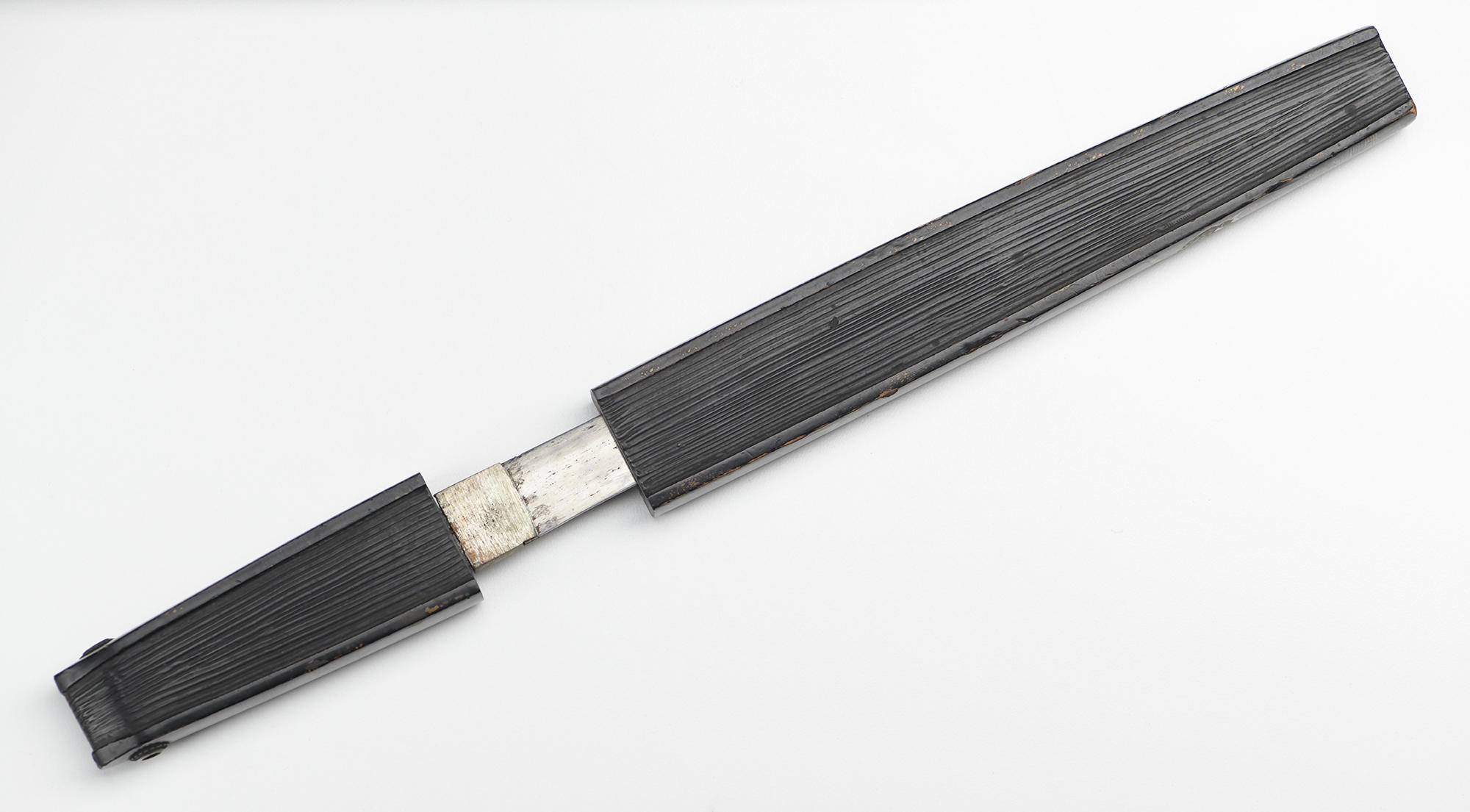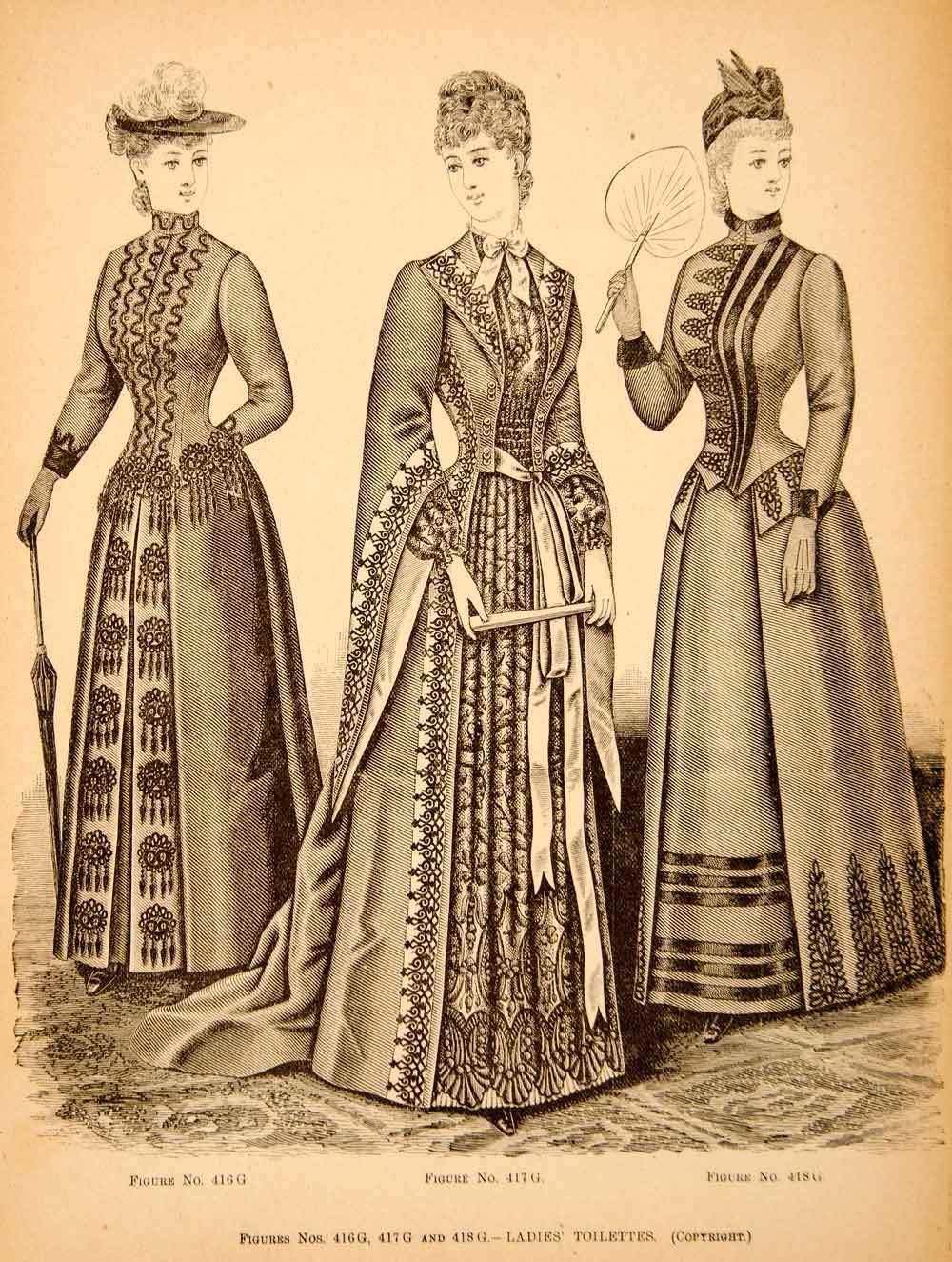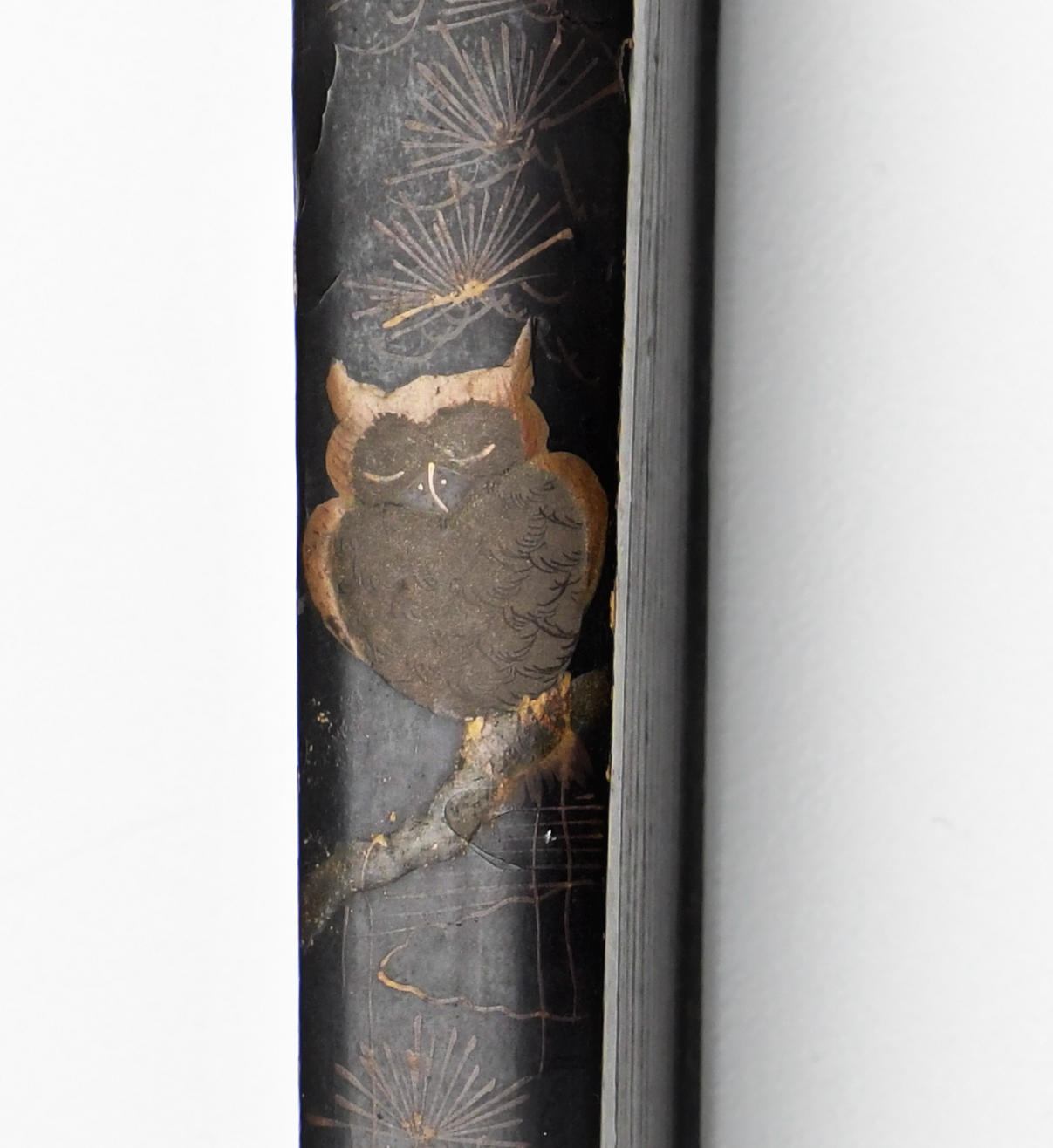Tucked away in a desk in the Macknight Room, we found a Japanese folding fan. There it had sat amidst papers, writing implements, and bric-a-brac; this was not unexpected, especially in a collection like the Gardner Museum’s.

Isabella Stewart Gardner Museum, Boston. Photo: Sean Dungan
At first glance, you can see delicate adornments in gold paint on the black lacquered outer sticks of the fan depicting flora and fauna, including a curious little owl that seems to stare back at you. But take a closer look, and it becomes apparent that this is no ordinary folding fan. In fact, it is not a folding fan at all. Instead, it is a type of knife—the kind linked to stories of assassination, self-defense, and ritual suicide in both the Far East and the West.
The deceptive Knife in Fan-Shaped Case—or fan tanto, as it was typically known, with “tanto” meaning a short blade that may either be single- or double-edged in Japanese culture—was found in the desk during an inventory of the galleries shortly after Isabella Stewart Gardner’s death in 1924. The inventory provides little additional information. The hilt (or handle) of the knife is disguised as the base of the fan’s sticks and rivet; the sticks and leaves of the fan in folded position form the knife’s scabbard (or holster).

Japanese, Knife in a Fan-Shaped Case, 19th century. Lacquered wood with metal blade
Isabella Stewart Gardner Museum, Boston. Isabella kept this in her desk in the Macknight Room
Originating and evolving throughout Japan’s feudal time period (1185–1868), tanto daggers were worn primarily by the Samurai social class. They were used by both men and women in Japan, although they are more often described as being carried by women, hidden in their kimono or obi for self-defense, or in more unfortunate circumstances as a mechanism for ritual suicide in case of capture. The fan tanto began appearing towards the end of the Edo Period in Japan, which lasted from 1603 to 1867. As folding fans were customary items in Japanese gatherings, they provided the carrier a perfect disguise for weapons such as this one, whether simply to defend oneself or for more nefarious motives.
On the other side of the world, the Victorian Era in England saw an increased interest in goods from the Far East, especially Japan, and the fan tanto did not go unnoticed. Retailers of the time created their own more innocuous renditions of the deceptive weapon by creating dagger-fans, which is a folding fan concealed in a dagger-shaped carrying case. Another appearance of the fan tanto in Victorian culture can be found in the 1879 French novel Le Crime de l’Opera by Fortuné de Boisgobey. The story features a scene in which a blackmailer is stabbed in an opera box by one of three masked ladies with a “Japanese fan-dagger, or poniard so made as to be concealed under the form of a fan.”

Victorian Era Fashion Plate of Women with Fans, 1889
Unfortunately, we cannot definitively say when or how Isabella obtained this object, which only adds to its alluring mystery, and may make you wonder: why did Isabella keep this hidden away in a desk? Was she ever compelled to use it? Or could she have just used it as a fancy (albeit dangerous) letter opener? Regardless, let this be a lesson to you: looks can be deceiving and there may be danger hiding in the ordinary.
You May Also Like

Explore the Museum
Visit the Macknight Room

Read More on the Blog
From Tree Sap to Tea Jar: East Asian Lacquer

Explore the Collection
Japanese Military Flag, 20th century



